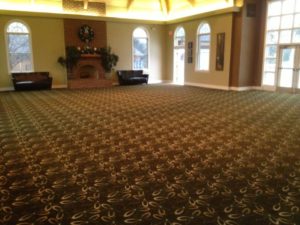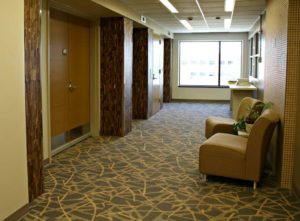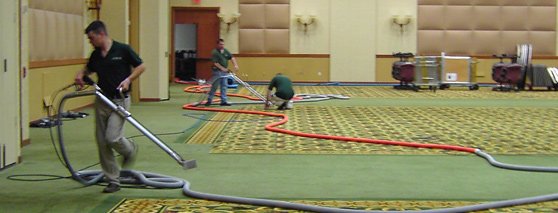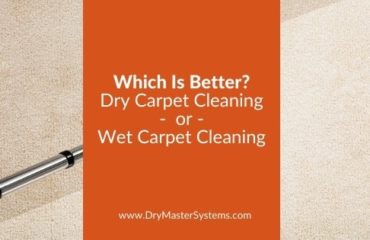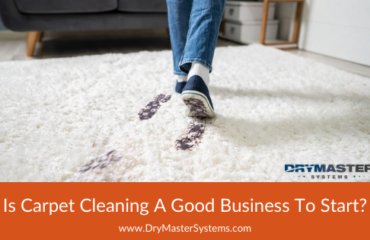Carpet cleaning technicians involved in commercial carpet cleaning, or those just now venturing into this lucrative (and often more steady) sector of the industry, may be in for a bit of a surprise.
When it comes to commercial carpet care, you are no longer “just a carpet cleaner,” as you have been when cleaning residential carpet; you are also your commercial clients’ carpet care advisor. They need your help because carpet is one of their biggest dollar-and-cents issues.
Here’s the situation in a nutshell. Suppose your commercial client has 15,000 square feet of carpeting. That carpeting costs $20.00 a square foot to purchase and install, which amounts to $300,000.
Let’s say the facility manager has projected operating costs and plans to replace that carpet three times over the next 30 years. Assuming all costs stay the same, that means that the carpet will cost this manager’s facility $900,000 dollars.
But let’s say that the carpet is not well cared for. Instead of being cleaned twice per year, it is cleaned every 18 months, allowing more than enough time for soils and grit to work their way into carpet fibers, resulting in a reduced life span for the carpet.
So instead of replacing the carpet three times in 30 years, we are now up to replacing the carpet five times in the same period, costing the facility $1.5 million. It does not take a math expert to figure out that this client could save $600,000 if she took better care of the facility’s carpet.
And that’s where you come in. In this scenario, our advice to this client would obviously be to have the carpet vacuumed frequently and extracted every six months.* While this would technically be a cost for the client, ultimately carpet cleaning is an investment because it is helping the facility save hundreds of thousands of dollars in the long run.
So, along with advising the commercial client on the need for more frequent carpet cleaning, what other advice can you offer to help your client maintain this valuable asset?
The first thing you should do is make sure the facility has installed high-performance mats at all key building entries. And you need to know why these should be installed. So to help you out, the following are some of the questions your commercial clients likely will ask about matting, along with suggested ways to answer them.
What exactly do mats do?
Mats are designed to capture and trap soil and moisture before they enter a facility. According to the American Institute of Architects, five feet of matting will capture about a third of walked-in debris; 10 feet will capture 52 percent; 15 feet will capture as much as 80 percent; and 20 to 25 feet of matting can capture 100 percent of soil along with moisture found on shoe bottoms so they never enter the facility. Some cleaning experts suggest that the bulk of soil in a facility is essentially walked in on shoe bottoms. And much of that soil will be deposited onto the facility’s carpet unless an effective matting system is in place.
While not specifically applicable to keeping carpet clean and healthy, we must note that another reason for installing mats is to provide a safe walking surface. As the mat captures and holds soil and moisture, it keeps floors drier and cleaner, which can help prevent a slip-and-fall accident.
Why should they install interior mats?
Interior mats should be installed over busy carpeted walkways, in and outside elevators, as well as at transition points — where a hard surface floor meets a carpeted floor.
These interior mats help prevent dust from becoming airborne and finding its way into carpet fibers. Interior mats help catch spills and prevent soil from one floor area being walked into another area of a facility. They should also be placed in food service areas or where coffee machines, copy machines and vending machines are installed for the same reasons.
In short, interior mats help keep carpet cleaner.
What is the life expectancy of a mat?
The types of mats recommended for a facility to keep it cleaner and help protect carpet are high-performance mats. These are higher-quality mats that normally must be purchased, not rented.
The life spans can vary due to a variety of reasons, most specifically the amount of foot traffic and climate conditions, but a high-performance mat should have a warranty of one or more years. As with carpet, if the mat is vacuumed frequently and cleaned (extracted) regularly, its life span will be extended as well.
What are ‘scrape,’ ‘wipe,’ and ‘crush’?
These are actually ratings that apply to different mats installed in different settings.
A facility such as a large office building might have different matting needs than those of a small hotel or retail outlet. A facility with heavier foot traffic would require a mat with higher scrape and wipe abilities.
“Crush” refers to crush resistance. Some mats can “crush out” in as little as 30 days, essentially rendering the mat useless. This typically happens with a rental mat or when the mat is not designed to handle the heavy foot traffic it is receiving.
There are many types of mats that help protect carpet and enhance its life span, and as your client’s carpet care adviser, you should be aware of all of them.
But let us conclude with something important that was referenced earlier: Along with frequent vacuuming, mats should be cleaned regularly using the extraction method. Some high-performance mats are bi-level mats, meaning soil and moisture collect under the surface of the mat so they do not come in contact with shoe bottoms. The only way to remove this soil is with regular carpet extraction.

